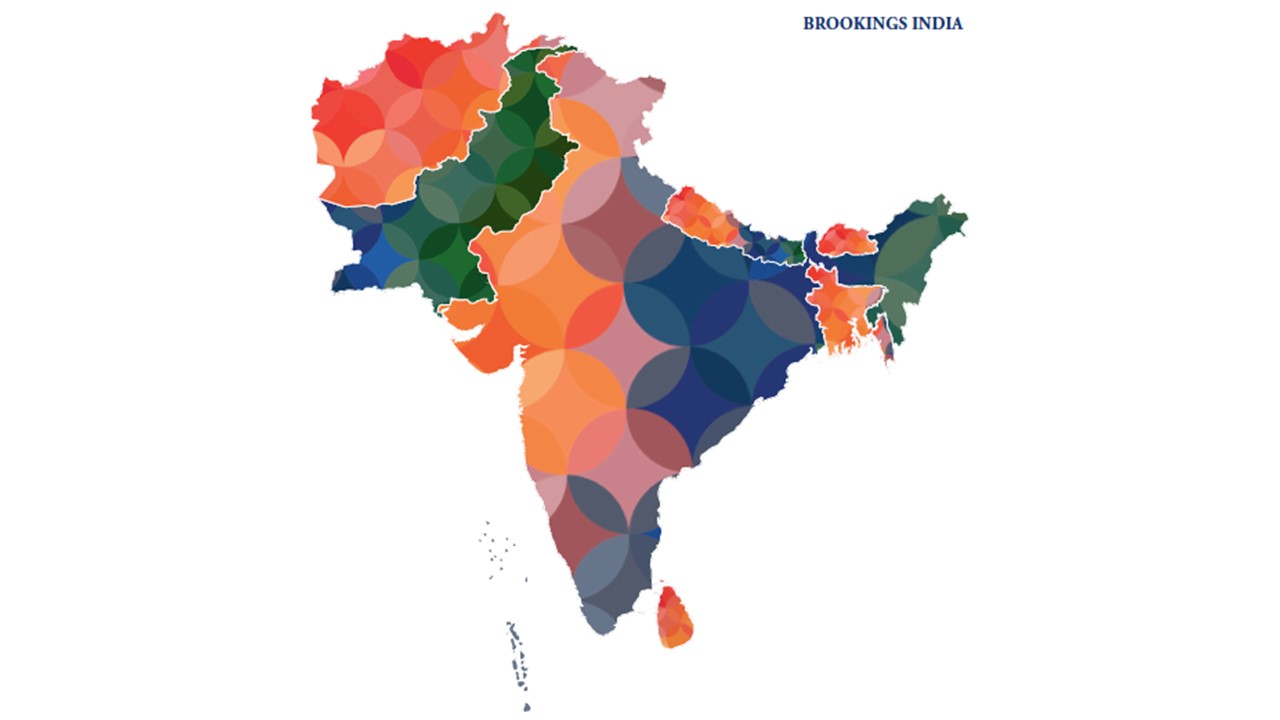Content from the Brookings Institution India Center is now archived. After seven years of an impactful partnership, as of September 11, 2020, Brookings India is now the Centre for Social and Economic Progress, an independent public policy institution based in India.
Al Qaeda has declared war on the countries of South Asia. It’s a threat not to be taken lightly and one that SAARC should address comprehensively and seriously.
Ayman Zawahiri’s announcement that a new Al Qaeda franchise has been created to wage jihad across the Indian subcontinent in September 2014 reflects the priority the Amir of Al Qaeda places on South Asia. He has always emphasized the ‘conspiracy’ against Islam is a Hindu-Zionist-Crusader alliance that must be fought in India, Pakistan, Bangladesh, Burma and Afghanistan just as it is in Egypt, Iraq and the Arabian peninsula.
Just days after the Zawahiri announcement the new Al Qaeda group attempted to hijack a Chinese built Pakistani frigate, PNS Zulfiqar, in Karachi. Using Pakistan navy officer insiders the jihadists sought to hijack the frigate secretly, take it to sea to join the multinational anti-piracy flotilla in the Arabian Sea and then fire surface-to-surface missiles at US Navy ships. It may have been a mission impossible but it was bold and audacious. It also demonstrated clearly that Al Qaeda has penetrated the Pakistani military. Not surprisingly the Pakistan Navy has said very little about the affair.
Zawahiri has many important friends in the region, a reflection of his years living in the subcontinent’s underground. Lashkar e Tayyiba’s (LeT) Hafeez Saeed is a longtime partner with Zawahiri, so is the Haqqani network. LeT has been hiding Al Qaeda operatives for years. Haqqani helps Zawahiri maintain an Al Qaeda network on the Afghan-Pakistan border. Zawahiri continues to pledge loyalty to Taliban leader, Mullah Omar, as commander of the faithful.
Other jihadists groups, such as the Harkat-ul-Jihad Al Islami and Islamic Foundation of Maldives are active in Bangladesh, the Maldives and India. Zawahiri hopes to build closer operational links to bind them all together.
In addition, the Islamic State (IS) group could attract followers in SAARC nations. Already some Pakistani Taliban have pledged loyalty to its self proclaimed Caliph Ibrahim. There are reports of IS black flags in Kashmir. SAARC states should nip the IS danger in the bud.
Pakistan is the most problematic state in all of this. It is both victim and patron of terror. An estimated 55,000 Pakistanis have died in terror related incidents since 2001. Yet the Inter Services Intelligence Directorate (ISI) of the Pakistan army armed, trained and planned the LeT attack on Mumbai in 2008 and probably played a similar role on the attack in May 2014 on the Indian consulate in Heart, Afghanistan. The ISI reports to the Chief of Army Staff, General Raheel Sharif not Prime Minister Nawaz Sharif; the army is a state within the state.
SAARC should publish an annual report on terrorism in South Asia, which should include not only Islamic extremist groups but also Maoist, Tamil and other groups operating in the region. The report could, in the first instance, trace the development of trends in incidents and profile the groups and leaders involved in terrorism. At a later stage it could seek to assign responsibility and accountability for terror attacks. The annual report would be the benchmark for studying terror.
SAARC should also provide a list of terrorist groups to be banned throughout the South Asian region and of individuals involved in terrorism much as the United Nations (UN) has done since 9/11. The UN lists could serve as the basis for the SAARC system. The existing UN lists already include Al Qaeda, LeT and other groups and individuals, including many fundraisers for terror. UN member states nominate groups and individuals and provide evidence for why they should be listed.
The summit also provides a venue for bilateral discussions. Prime Ministers Narendra Modi and Sharif are both the target of LeT in many ways. They both want to avoid another crisis in South Asia that complicates their real agenda of economic development. The two should meet alone without aides to candidly discuss their concerns and seek shared avenues for cooperation and communication.
_______________________________________________________________________________
This chapter is a part of Brookings India’s briefing book, “Reinvigorating SAARC: India’s Opportunities and Challenges.” To view the preface and table of contents, click here.
***
Bruce Riedel is senior fellow and director of the Brookings Intelligence Project. His latest book is What We Won: America’s Secret War in Afghanistan, 1979-1989 (Brookings Institution Press, 2014).
_______________________________________________________________________________
The Brookings Institution is committed to quality, independence, and impact.
We are supported by a diverse array of funders. In line with our values and policies, each Brookings publication represents the sole views of its author(s).


